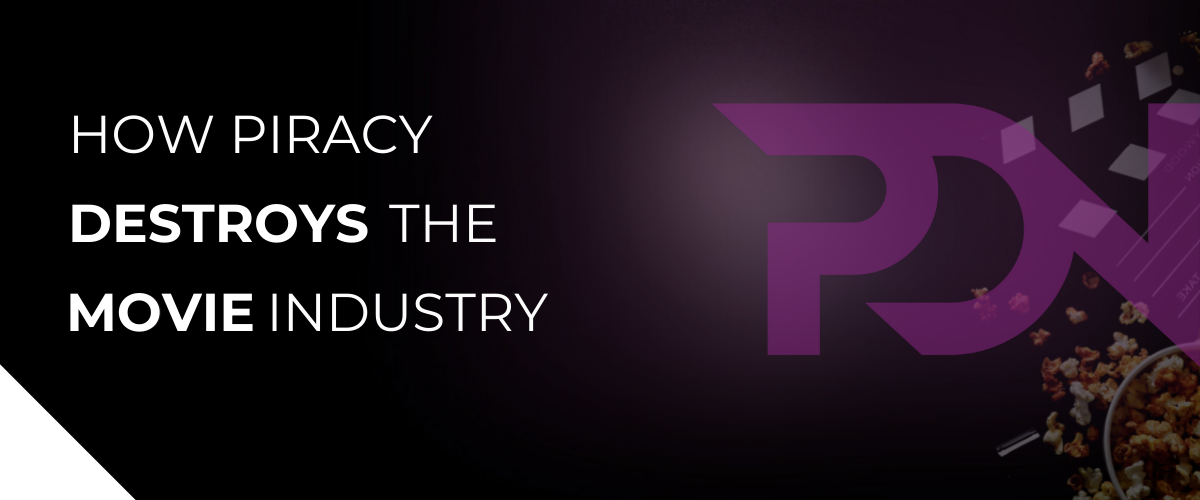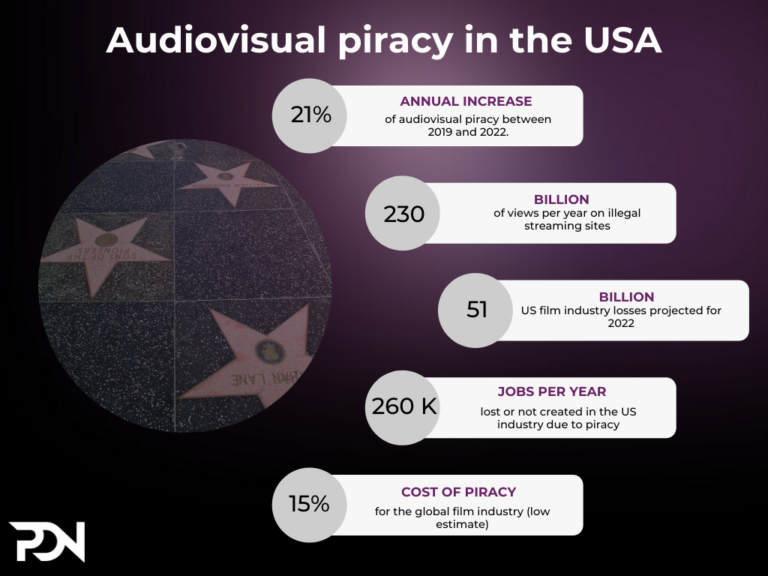
The film market is dominated by a few players, surrounded by a multitude of very small structures. Similarly, the big budget movies make the most profit and views, but the number of small productions is almost infinite.
The market is thus divided between these mainstream blockbusters and independent movies.
The most common piracy practices are:
Direct downloading (DDL)
The Impacts of digital video piracy on the US economy report, commissioned by the U.S. Chamber of Commerce, estimates that 80% of movie piracy takes place on illegal streaming platforms.

As with any illegal activity, exact figures are difficult to find. However, reports made for a few countries – the US, France, Australia – allow us to draw an image of the worldwide consequences of piracy, and they are scary. In 2019, there has been about 230 billion views on illegal streaming services, and 15 billion views came from the US. About 30% of these views are of movies, the remaining part being TV show episodes. (source: Statista)
Online piracy generates losses in the US that are estimated to be at least as high as 29 billion dollars, but since the estimates are hard to calculate, it could also be closer to 70 billion per year (10 to 24% of the industry’s revenues). These figures have been published in 2019 in the report commissioned by the U.S. Chamber of Commerce and projections show that in 2022 this loss will be at least 51 billion – a 21% per year increase, if based on the 29 billion of 2019.
For the television industry, this loss is estimated to at least 39 billon dollars, but might be as much as 95 billion.
As a consequence, jobs are also lost or not being created. The damage from piracy is estimated to at least 260,000 jobs in the USA alone.
In France, according to the consulting firm EY the French film industry was already losing nearly 1.4 billion euros in 2016. This figure was a steady increase over the previous two years, so it is reasonable to assume that this trend will continue. EY states that this estimate is very conservative, and that the actual loss to the industry is probably much higher. Even so, this represents about 15% of the industry’s revenue, which is consistent with the study published by the U.S. Chamber of Commerce.
One in three Internet users also consumed films and series illegally in France in 2016. As this figure is based on declarations, it is reasonable to think that it is actually much higher.
In 2015, an Ipsos report conducted on behalf of the Australian Federation Against Copyright Theft (AFACT) also revealed that 45% of people pirating movies would have paid to watch a legal version if they did not have access to an illegal one.
Making pirated content more difficult to access through the removal of illegal content seems to be very effective to make a part of Internet users start paying for content. It is therefore the main tool you can use to increase your revenues.
Once again, the data is mostly available for the US but can be extrapolated to the rest of the world.
About 80% of adults use legal streaming services (Netflix, Amazon prime and others) – about 214 million users in the US alone.
88 million of these users borrow the credentials of friends or family members to connect to these legal streaming services. This loss of revenue would represent 4 billion dollars per year in 2021. In 2020 the loss was estimated at 2.6 billion.

Despite the fact that figures are hard to find, the trends identified all seem to confirm a few assumptions:
It is therefore essential to find solutions to limit piracy, and safeguard the turnover and jobs of this key sector of culture.
For this, a company that specializes in audiovisual content protection can make a huge difference. The savings you make can perhaps help you finance that film you never thought you could afford.
Contact one of our PDN experts, and we will help you define a solution that is perfectly adapted to your needs and means, regardless of the size of your company.
Read our next article to find out what cybersecurity and anti-piracy tools are available to you to protect your movies and TV shows. See you soon!
© 2023 PDN Cyber Security Consultant. All rights reserved.